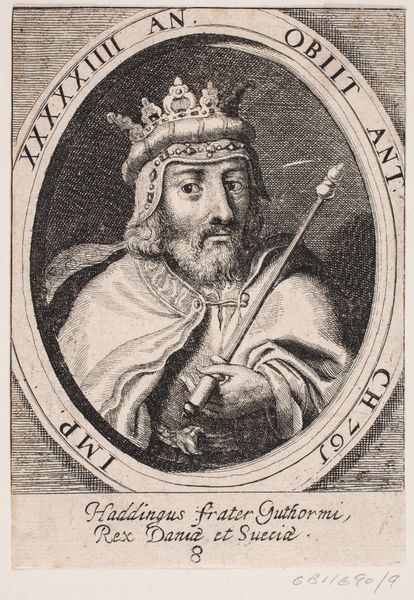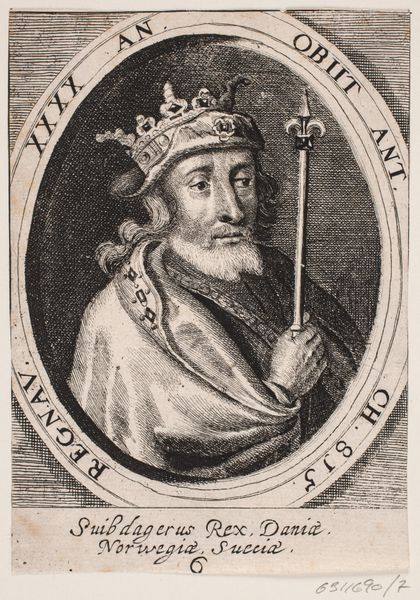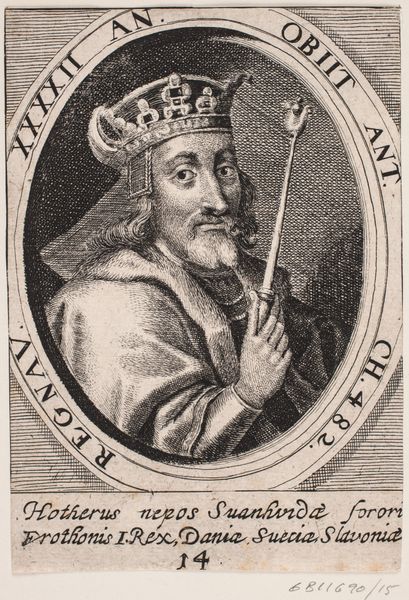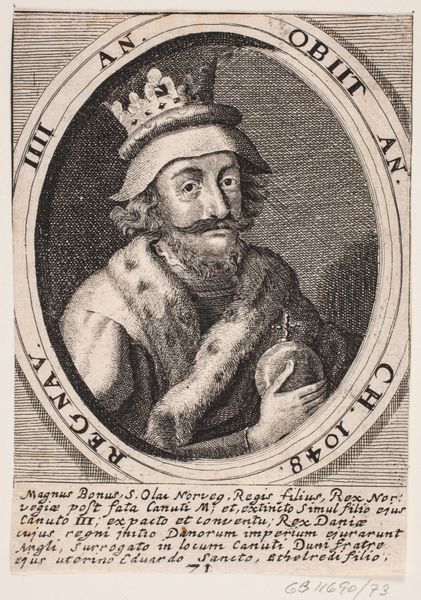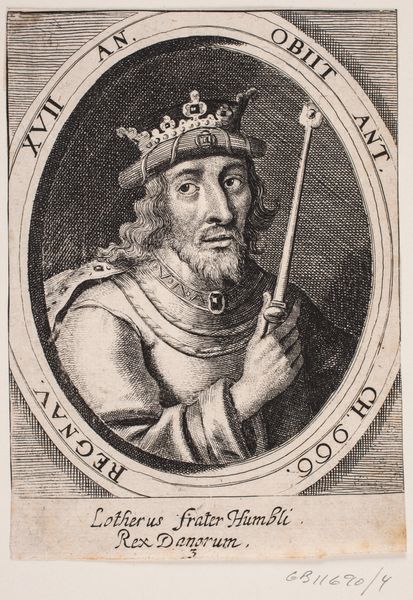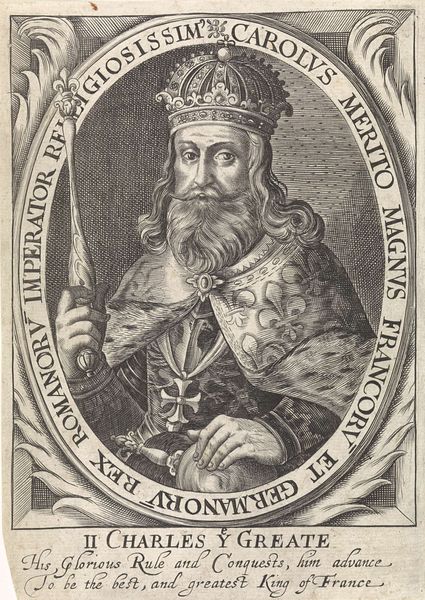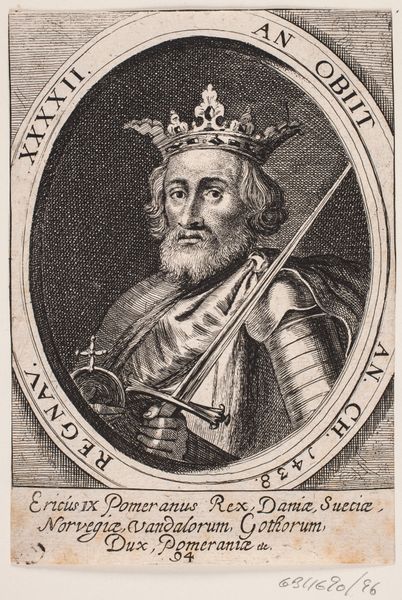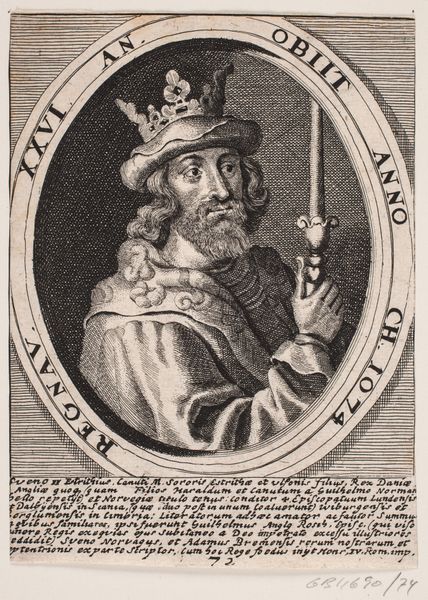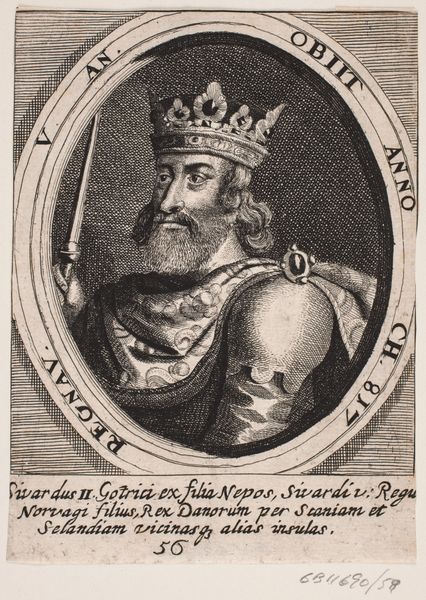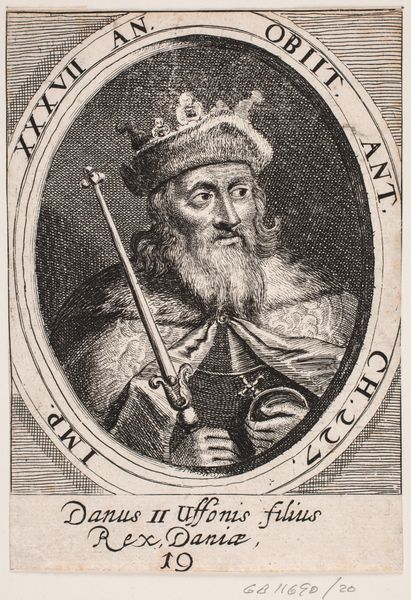
print, engraving
#
portrait
#
baroque
# print
#
old engraving style
#
portrait reference
#
history-painting
#
engraving
Dimensions: 140 mm (height) x 100 mm (width) (bladmaal)
Editor: This is an engraving from 1646, titled "Knud den Store," or Canute the Great. It seems to be after an anonymous artist, currently housed at the SMK in Copenhagen. The portrait is quite regal and stern, with an interesting oval frame containing text. How do you interpret this work and its historical context? Curator: This engraving serves as a powerful statement about the construction of historical narratives and national identity. Notice how Canute is depicted, not just as a king, but as a divinely sanctioned ruler. The text surrounding the portrait likely aims to solidify his lineage and power. It is crucial to consider the political climate in 1646, the year of its creation. What purpose might this idealized image of a historic Danish king serve in that particular moment? Editor: It seems to legitimize claims to power, perhaps? I'm struck by how much detail is included within a relatively small space. The inscription, the elaborate clothing, the crown—they all add to the king’s perceived authority. Curator: Precisely! And consider this portrait within a broader European context. The Baroque period was fascinated with representing power and status, often through elaborate ornamentation and symbolic imagery. The decision to create a print allows for wider dissemination, making it a tool for projecting an image of strength and continuity. Can you see how understanding the societal function of images like these helps us to see beyond just aesthetics? Editor: Absolutely. I hadn't really thought about the print as a political object, but that makes perfect sense. It’s a fascinating intersection of art and power. Curator: Indeed. By looking at this work through lenses of power, representation, and historical context, we gain a much richer understanding, and, perhaps, we begin to question the very narratives it attempts to establish. Editor: I appreciate that perspective. It’s shown me how a seemingly straightforward portrait can reveal so much more about its time and purpose.
Comments
No comments
Be the first to comment and join the conversation on the ultimate creative platform.
